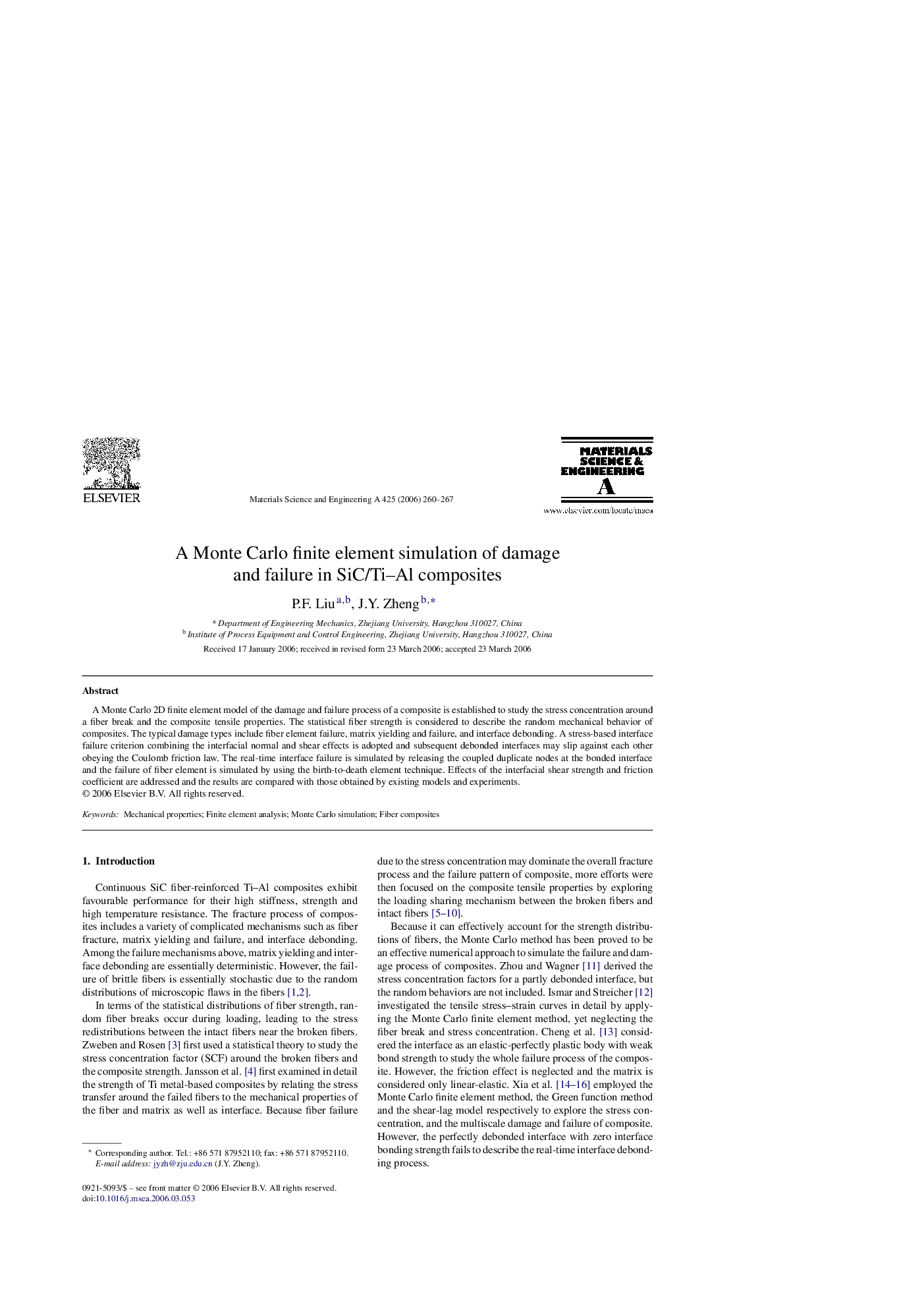| Article ID | Journal | Published Year | Pages | File Type |
|---|---|---|---|---|
| 1585449 | Materials Science and Engineering: A | 2006 | 8 Pages |
A Monte Carlo 2D finite element model of the damage and failure process of a composite is established to study the stress concentration around a fiber break and the composite tensile properties. The statistical fiber strength is considered to describe the random mechanical behavior of composites. The typical damage types include fiber element failure, matrix yielding and failure, and interface debonding. A stress-based interface failure criterion combining the interfacial normal and shear effects is adopted and subsequent debonded interfaces may slip against each other obeying the Coulomb friction law. The real-time interface failure is simulated by releasing the coupled duplicate nodes at the bonded interface and the failure of fiber element is simulated by using the birth-to-death element technique. Effects of the interfacial shear strength and friction coefficient are addressed and the results are compared with those obtained by existing models and experiments.
